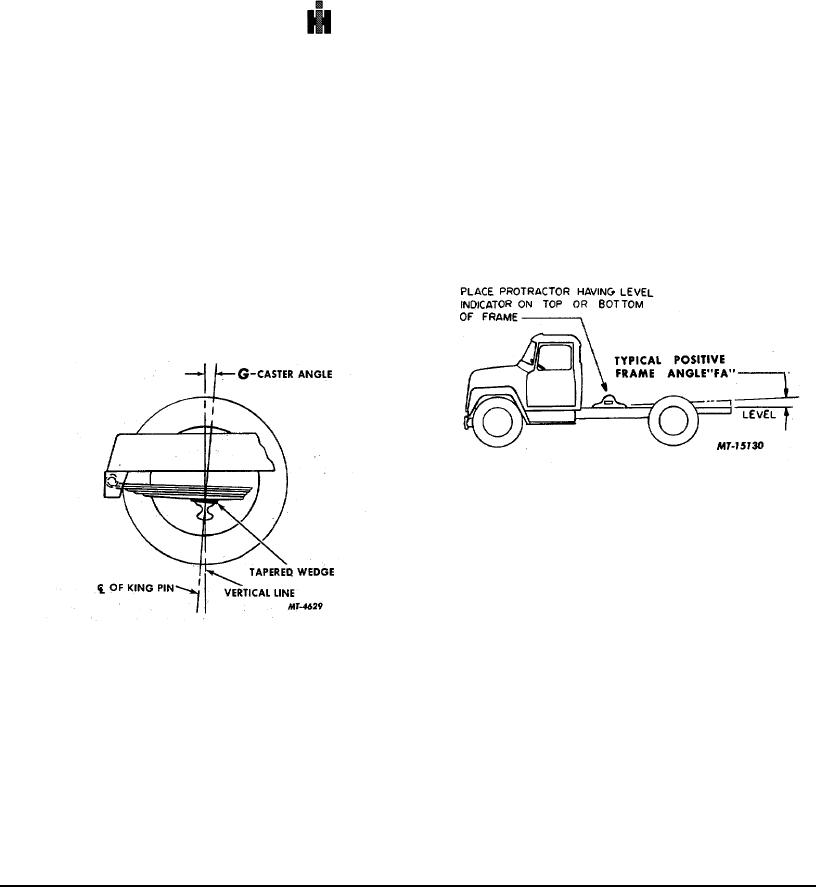
TRUCK SERVIE MANUAL
FRONT AXLE
The caster, camber and toe-in dimensions are
With the vehicle on a smooth, level surface
for vehicle at design load (frame level). If frame is not
frame angle should be measured with a bubble
level on alignment equipment, the frame angle must be
protractor placed on the frame rail. See Fig. 2. The
considered. This is especially important when making
degree of tilt from the level frame position is the angle
caster check, for the frame angle must be added to or
that must be used in determining a correcting caster
subtracted from the caster angle to obtain a true setting.
setting. Positive frame angle is defined as forward tilt
(front end down) and negative angle as tilt to rear (front
CASTER ANGLE
end high).
Caster is the amount in degrees the top of the
king pin is inclined toward the front or rear of the truck,
The measured frame angle should be added or
as viewed from the side of the truck. The caster angle
subtracted, as required, from the specified level frame
can range from a positive angle to a negative angle.
caster setting to obtain the caster that should actually be
measured on vehicle.
Positive caster, Fig. 1, is the tilting of the top of
the king pin toward the rear of the truck, while negative,
or reverse caster, is the tilting of the top of the king pin
toward the front of the truck.
Fig. 2
1. Positive frame angle should be subtracted from
specified setting.
2. Negative frame angle should be added to
specified setting.
As an example, if the specified caster setting is a
positive 10 and it is found that the vehicle has a positive
one degree frame angle, then the measured caster
should be 0 + 1/20. This would result in the desired 10
Fig. 1
+ 1/2 caster angle when the chassis settled to level
Positive caster imparts a trailing action to the
frame under load.
front wheels, while negative, or reverse caster, causes a
leading action. The correct amount of caster helps to
Possible causes of incorrect caster are sagging
keep the front wheels in the straight-ahead position.
springs, bent or twisted axle, or unequally tightened
When in a turn, caster acts as a lever, assisting the
spring U-bolts. In most cases a twisted axle would be
driver to return the front wheels to the straight-ahead
the cause if caster varies more than the specified 1/20
position.
between left and right side.
Caster specifications are based on vehicle
If caster must be corrected, taper shims can be
design load, which will usually result in a level frame. If
used as required between the springs and axle. Spring
the frame is not level when alignment checks are made,
U-bolts should be tightened evenly and to specified
this must be considered in determining whether the
torque after the addition or removal of shims.
caster setting is correct.
5

